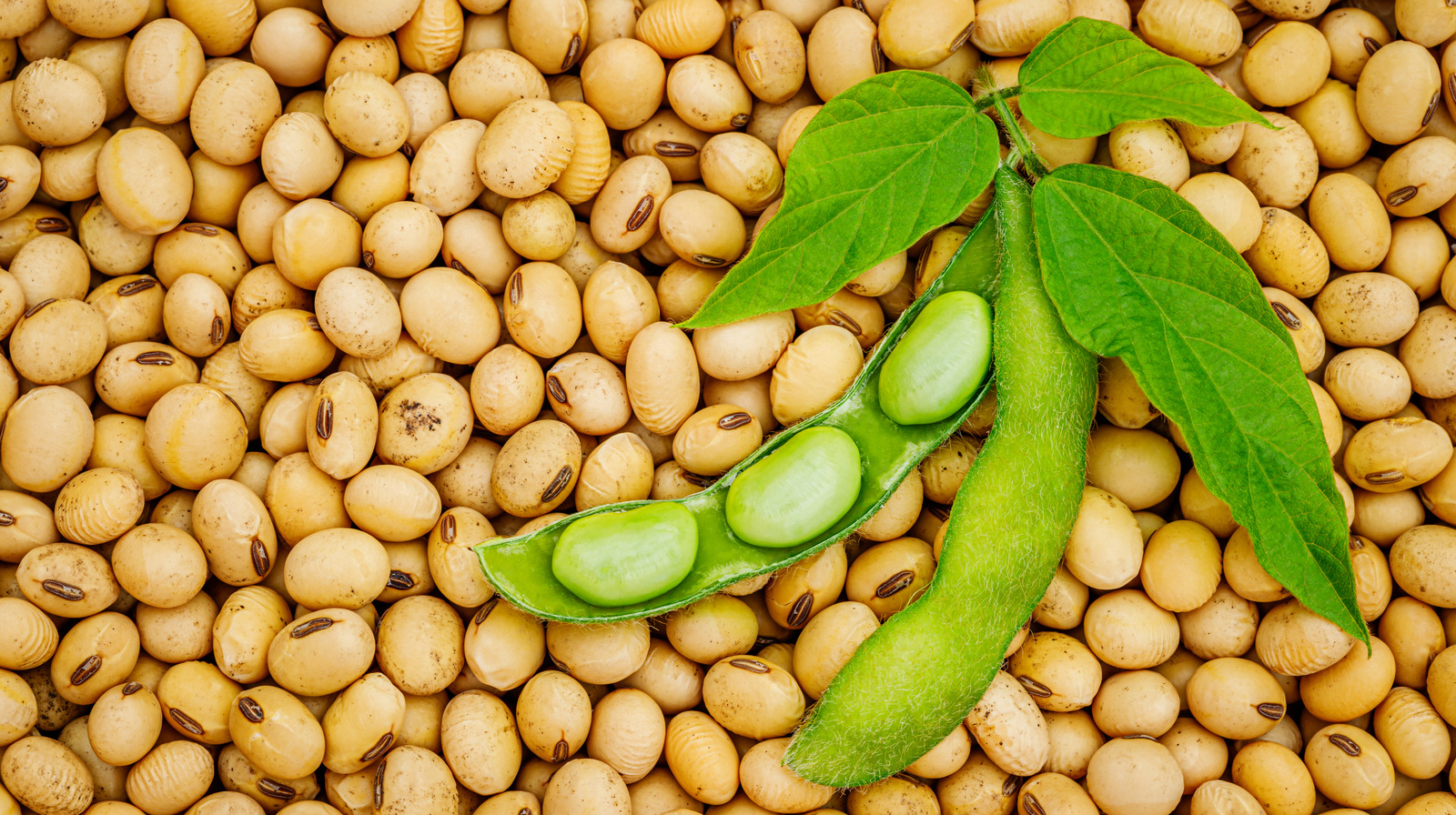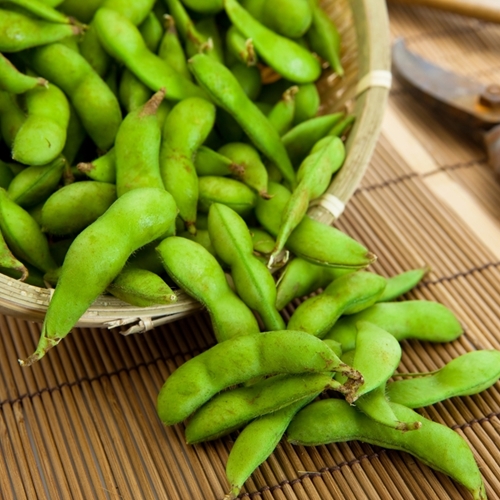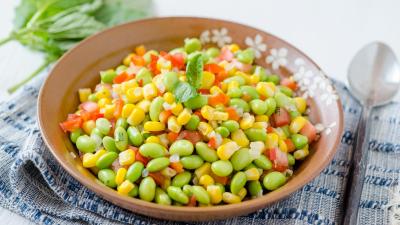Is soy bad for you? Here’s how eating soy daily can affect your body.

Soy foods like tofu, tempeh and miso are important ingredients in many traditional Asian diets. But although the U.S. is one of the major producers of soybeans in the world, with soybeans being the second-largest crop grown in the country, many U.S. adults don’t consume lots of soy products.
Intake of soy foods on a typical Western diet may be relatively low, but does still include soy in various forms, from cooking oil to condiments such as soy sauce and tamari to soybeans in a pod (edamame), to dairy and protein alternatives such as soymilk, soy flour, soy protein isolate and soy protein lecithin and more.
But what exactly happens when you eat soy foods every day? Let’s take a deep dive into the research to see how eating soy every day can affect the body.
 You May Get High-Quality Protein
You May Get High-Quality Protein
From building and repairing muscles, skin, tissue, hair and nails to supporting and building hormones and enzymes, protein is an essential part of every cell in the body. If you follow a plant-based eating pattern, you do not want to miss out on soy, mainly traditional soy foods like tofu and edamame. Both offer high-quality protein, with 18.4 grams of protein per 1-cup (155 grams) serving for shelled edamame and 21.8 grams for every 1/2 cup of raw firm tofu, per the USDA.
Generally speaking, adults need around 0.8 grams daily protein per kilogram of body weight. In other words, if you weigh 60 kilograms (132 pounds), you will almost meet of your daily protein requirement just by eating 1 cup of shelled edamame and 1/2 cup of firm tofu.
You Might Lower Your Risk of Heart Disease

Another perk of eating traditional soy foods every day is the possibility of reducing your risk of heart disease. A recent study published in Circulation discovered that individuals who ate at least one serving of tofu every week had an 18% lower risk of heart disease than those who had less than one serving per month. In fact, soy is the only plant-based protein that the Food and Drug Administration authorizes to bear the health claim that a diet low in saturated fat that includes soy protein may reduce the risk of coronary heart disease.
You Might Reduce Your Cholesterol Levels

Eating soy foods may also reduce your LDL (“bad”) cholesterol levels. A 2019 review published in The Journal of Nutrition found that consuming 25 grams of soy protein per day (slightly more than half a cup of raw firm tofu) for six weeks reduced LDL cholesterol by 3% to 4% compared to those who did not eat any.
Still, the debate about consuming soy and its potential to lower cholesterol levels is ongoing. Some studies did not find that soy could significantly lower cholesterol. Nevertheless, you may still want to include these low-saturated-fat, soy-based foods in your diet. For instance, every cup of edamame contains only about 1 gram of saturated fat, and every 1/2 cup of firm tofu has 1.5 grams, making them perfect alternatives to animal-based proteins that are typically higher in saturated fat.
You May Benefit from Isoflavones

You can give credit to soy’s isoflavones, a type of phytoestrogen that works like estrogen in the body but with weaker effects, for their possible protection for the heart. But this plant-based estrogen may play additional roles, particularly in improving menopause symptoms and lowering the risk of some cancers, such as colorectal cancer, per a 2022 review published in the Journal of Agriculture and Food Research.
You may also be surprised to learn that soy has the highest amount of isoflavones among all foods. So, how much isoflavone does one serving of soy food have?
For every gram of soy protein in traditional soy foods like tofu and soymilk, there are 3.5 mg of isoflavones. In other words, if you consume 2 cups (8 fluid ounces) of soymilk or 100 grams of tofu, you would ingest 25 mg of isoflavones. While no recommended isoflavone intake has been established, a 2021 study published in Menopause found that 79% of study participants who included 1/2 cup of soybeans in salads or soups for 12 weeks had a significant reduction in hot flashes.
You Could Be Getting Less Iron Than You Think

Soy is a good source of iron, so it is logical to think that the more soy foods you eat, the more iron you will consume.
While you are partially correct, your total iron intake may not be the issue, but the type of iron you consume is; soy’s iron may not be as easily absorbed as the iron in animal-based protein. Heme iron in beef, pork, poultry and seafood is more bioavailable than the non-heme iron in soy. This means that if you follow a vegetarian or a vegan diet relying on plant-based proteins such as soy as your protein source, you may have lower iron stores, per a 2018 review published in Critical Reviews in Food Science and Nutrition. Low iron stores can increase your risk of iron-deficiency anemia.
To minimize your chance of an iron deficiency on a vegetarian or vegan diet, you may need to eat at least 1.8 times more iron than those who eat meat, per the National Institutes of Health. This translates to:
- 14.4 mg for adult males of all ages and females over 51 years old
- 32.4 mg for females between 18 and 50 years old
For example, 1/2 cup raw tofu provides 3.35 mg of iron, so if you need 14.4 mg, you’d need to eat 2 cups of firm tofu, or almost 5 cups if you need 32.4 mg of iron. Since that’s an unrealistic amount, remember it’s best to include a variety of plant-based foods in the diet to meet your iron and other nutritional needs.
The Bottom Line
There is still a lot that we do not know about soy, and more research is needed to confirm its potential benefits. However, soy is a quality protein you can include in your diet. Adopting a plant-based diet with soy requires you to plan your meals and snacks to ensure they’re nutritionally adequate.
Source: https://www.eatingwell.com







